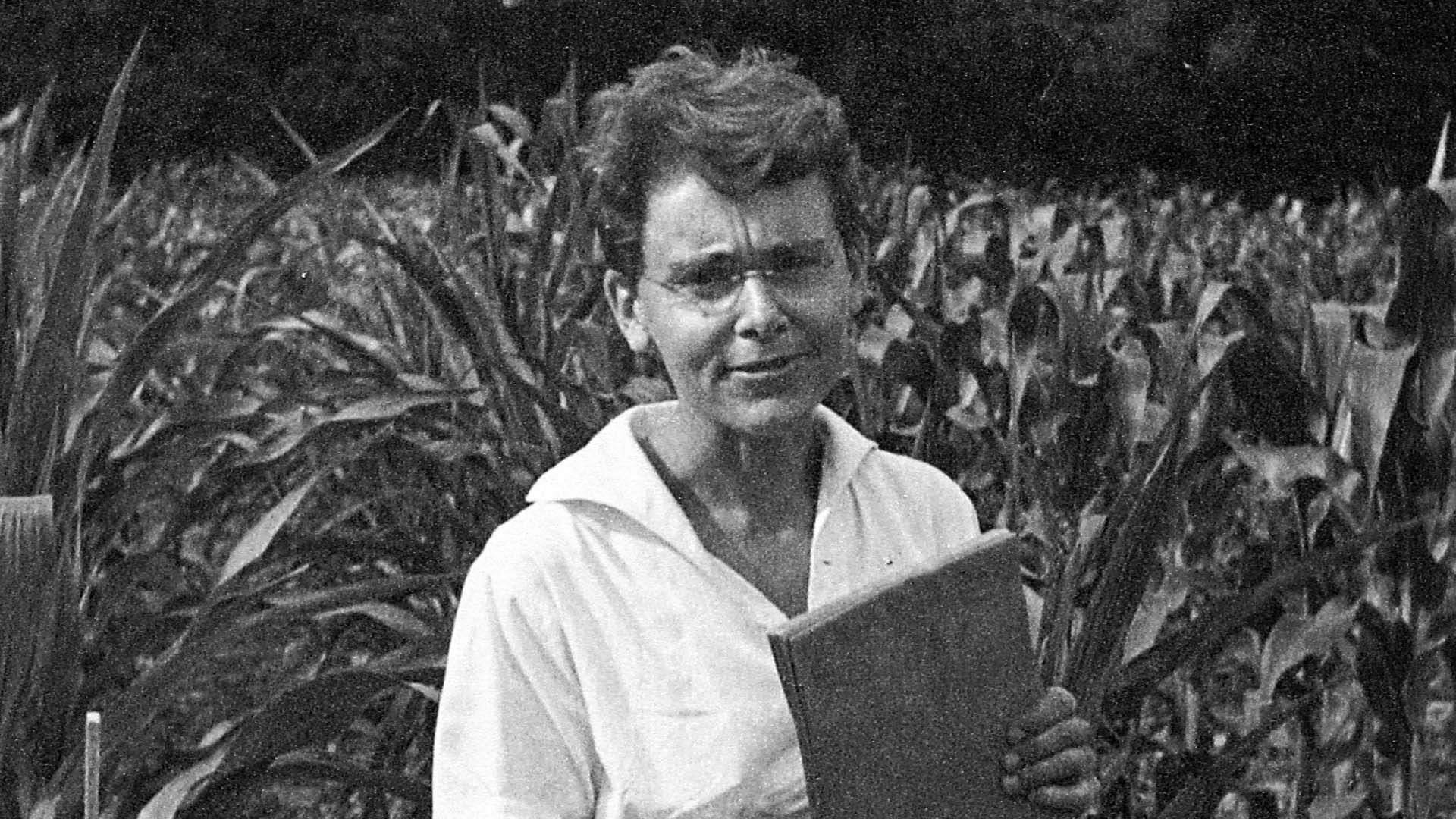Barbara McClintock was an American scientist whose pioneering work reshaped the field of genetics. Her research not only introduced fundamental genetic mechanisms but also expanded the scientific understanding of genome dynamics. McClintock’s achievements are especially significant given the era in which she worked, when genetics was still an emerging discipline and scientific opportunities for women were limited.
Genetics prior to McClintock
Prior to McClintock, the scientific community generally believed that genes had fixed positions on chromosomes. The concept of genomic stability had not yet been seriously questioned. Discoveries by Gregor Mendel, Thomas Hunt Morgan, and Charles Darwin provided a framework of inheritance, chromosomal theory, and evolutionary change. However, these frameworks largely depicted genomes as stable blueprints, rarely subject to internal change outside of mutation due to external agents.
McClintock’s Early Research: Maize Cytogenetics
Barbara McClintock carried out a significant portion of her pioneering studies on maize (corn) at Cold Spring Harbor Laboratory. Her skill in maize cytogenetics—examining cellular structures, chromosomes, and their connection to gene functions—was unmatched. By employing light microscopy and original staining methods, she was able to describe the physical properties of chromosomes during cell division, revealing processes that had escaped scientists before.
A notable initial accomplishment was her investigation of chromosomal crossover during meiosis. Through careful observation, McClintock showed that chromosomes actually swap sections. This offered visual evidence of genetic recombination, backing theories suggested by Morgan’s fruit fly studies.
The Discovery of Transposable Elements
McClintock’s most notable achievement was her discovery of transposable genetic elements, or “jumping genes.” While conducting experiments during the 1940s and early 1950s, she noticed unusual color patterns in maize kernels. She theorized that certain genes could move around in the genome, affecting the function or regulation of other genes.
By studying the Activator (Ac) and Dissociator (Ds) elements, McClintock demonstrated how certain genetic sequences could move to different locations on a chromosome. For instance, the presence of Ds in a specific position could disrupt the color gene in maize, leading to mottled or variegated kernels. Ac could facilitate the movement of Ds, and their interactions led to a variety of observable kernel patterns.
This mechanism explained not only color variation but also provided a model for how genes might be regulated or turned on and off—concepts central to modern epigenetics.
Scientific Impact and Initial Dismissal
Although these discoveries were crucial, McClintock’s peers remained doubtful. The idea of gene movement was so groundbreaking that it clashed with the fixed and unchanging perception of the genome that was common then. For many years, her research was pushed aside, and references to her conclusions were few and far between.
It was not until the late 1960s and 1970s, as similar elements were identified in bacteria (such as insertion sequences in E. coli), that the broader scientific community recognized the accuracy and importance of McClintock’s discoveries. Her findings became foundational as mobile genetic elements were found to play key roles in mutation, genome structure, antibiotic resistance, and evolutionary adaptation.
Broader Significance and Ongoing Influence
Long after the era in which she worked, McClintock’s research is considered a cornerstone in molecular genetics. Jumping genes, or transposable elements, have since been found in virtually all organisms, including humans, where they make up a substantial portion of the genome.
Further studies based on her work have linked transposable elements to significant biological phenomena:
1. Genetic Diversity: Mobile elements contribute to genomic variation and evolution. 2. Genome Plasticity: Organisms use transposable elements to adapt to environmental challenges. 3. Gene Regulation: Transposons can serve as regulatory elements, influencing when and how genes are expressed. 4. Human Health: Some human diseases, including certain forms of cancer, result from transposon activity. 5. Biotechnology: Tools like gene therapy and gene editing have roots in the understanding of mobile genetic sequences pioneered by McClintock.
Recognition and Legacy
Barbara McClintock received the Nobel Prize in Physiology or Medicine in 1983—the only woman to receive an unshared Nobel in this field. The award cited her discovery of “mobile genetic elements,” validating work she conducted decades prior and underscoring her perseverance in the face of skepticism.
Her approaches—close observation, theorizing through trials, and handling unexpected outcomes—offered a comprehensive perspective to genetics. She continues to symbolize the strength of inquisitiveness and autonomy in scientific inquiry.
The studies conducted by Barbara McClintock significantly transformed our grasp of genomics, revealing its nature as both adaptable and active, contrary to being just fixed. Her exploration with corn shed light on the ways genetic information can rearrange, create variation, and evolve. The extensive following research on mobile genetic elements has shown how individual breakthroughs can redefine whole scientific frameworks, ultimately providing a more profound understanding of life’s structure.





